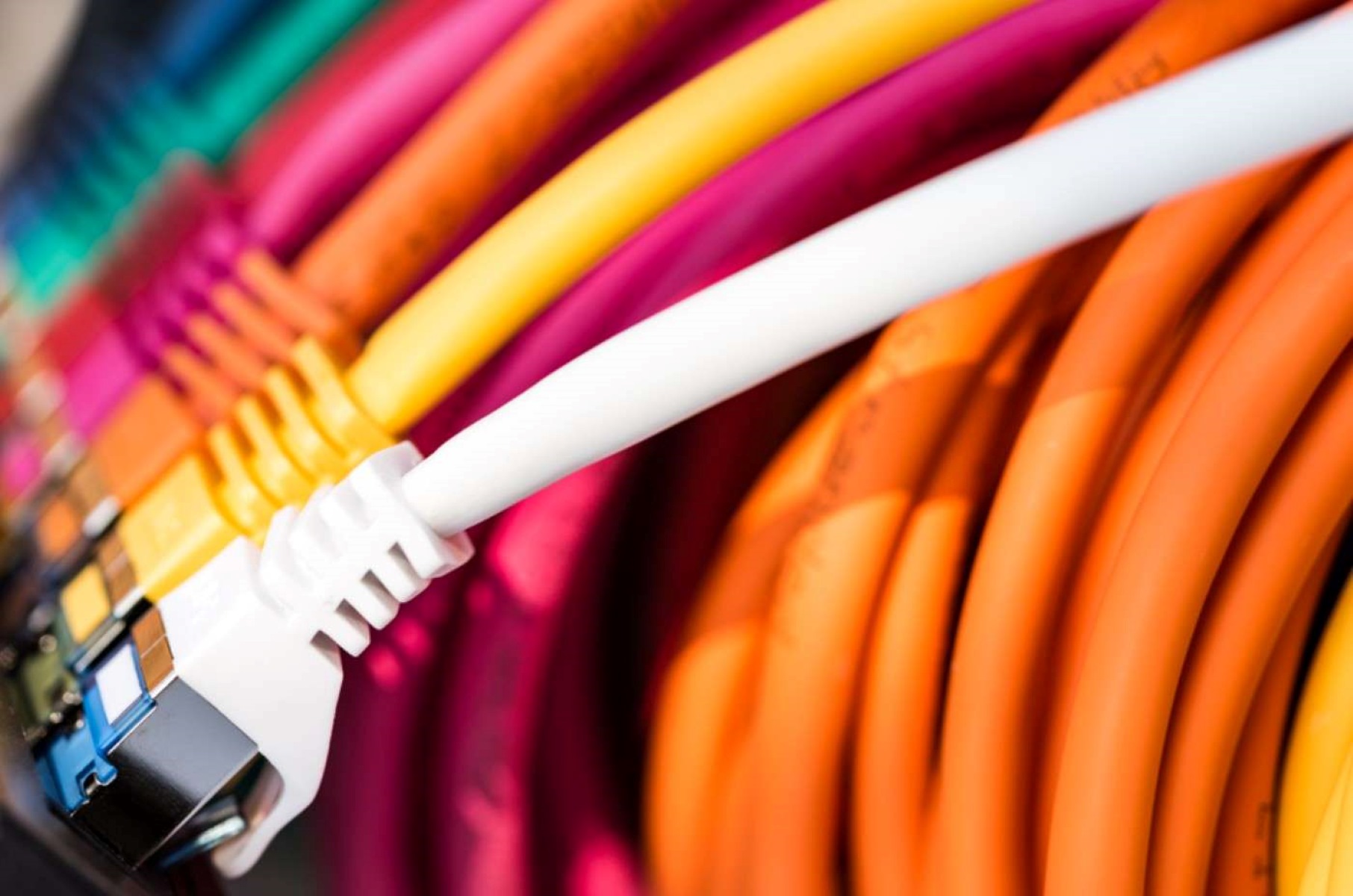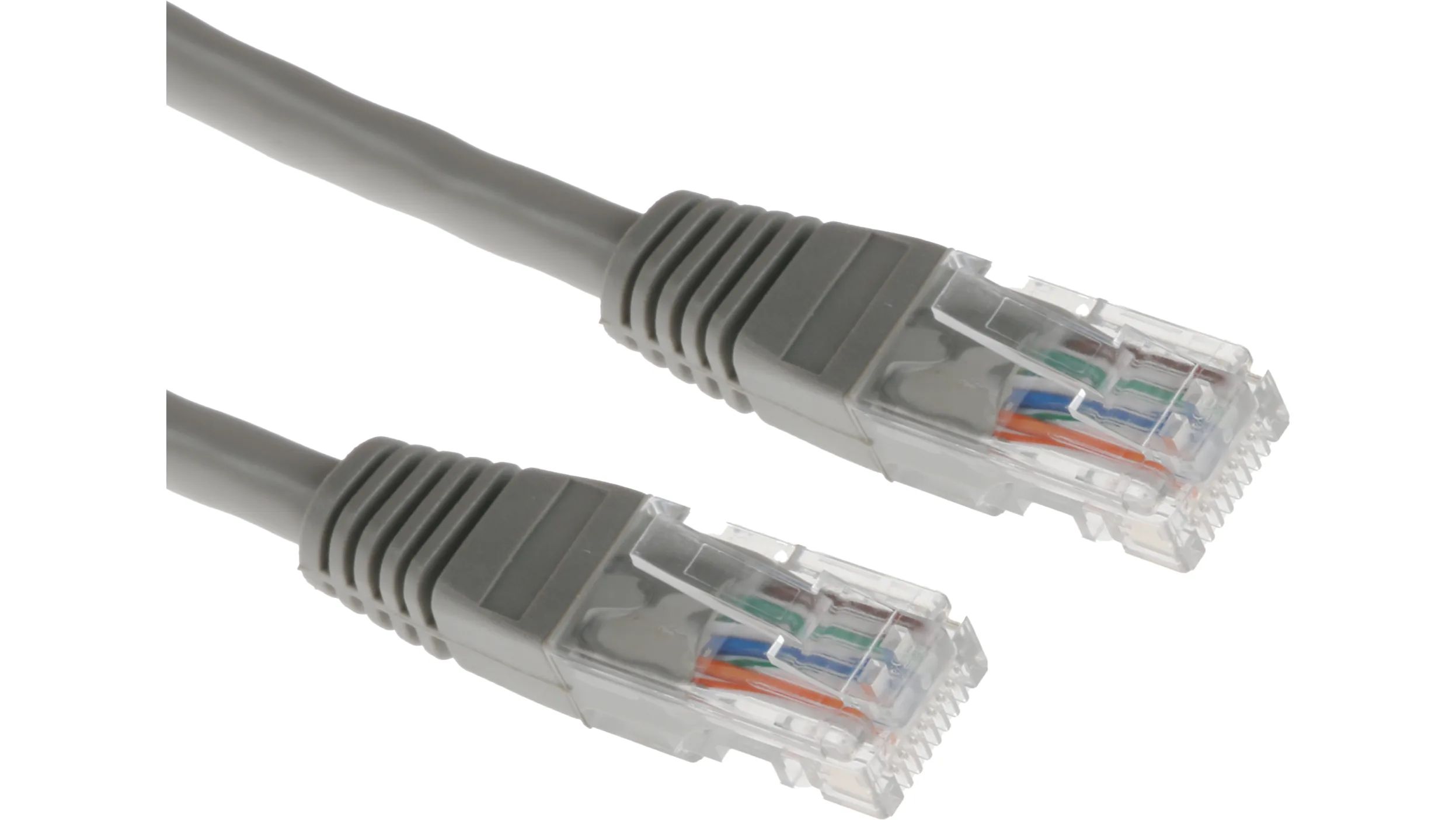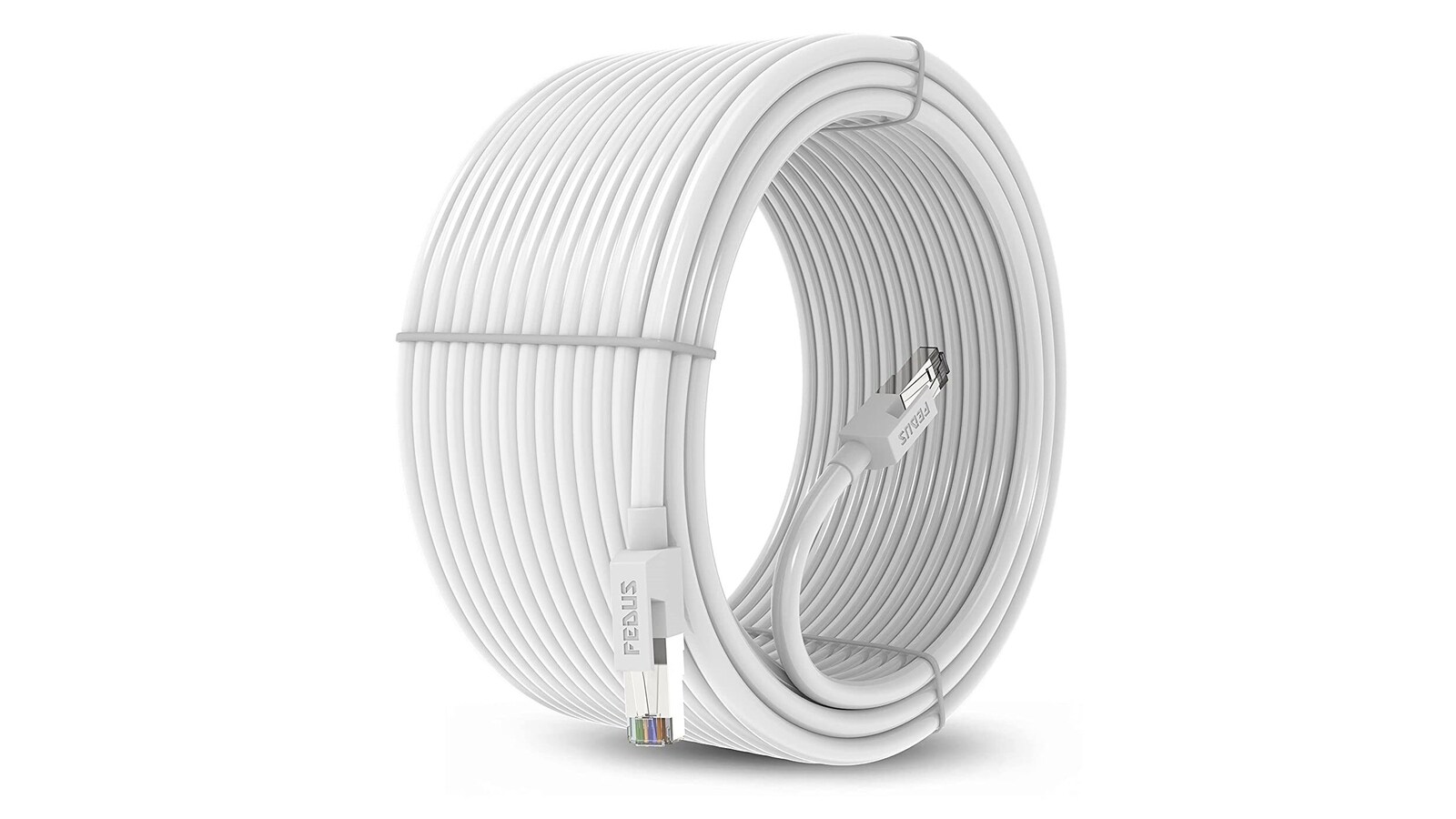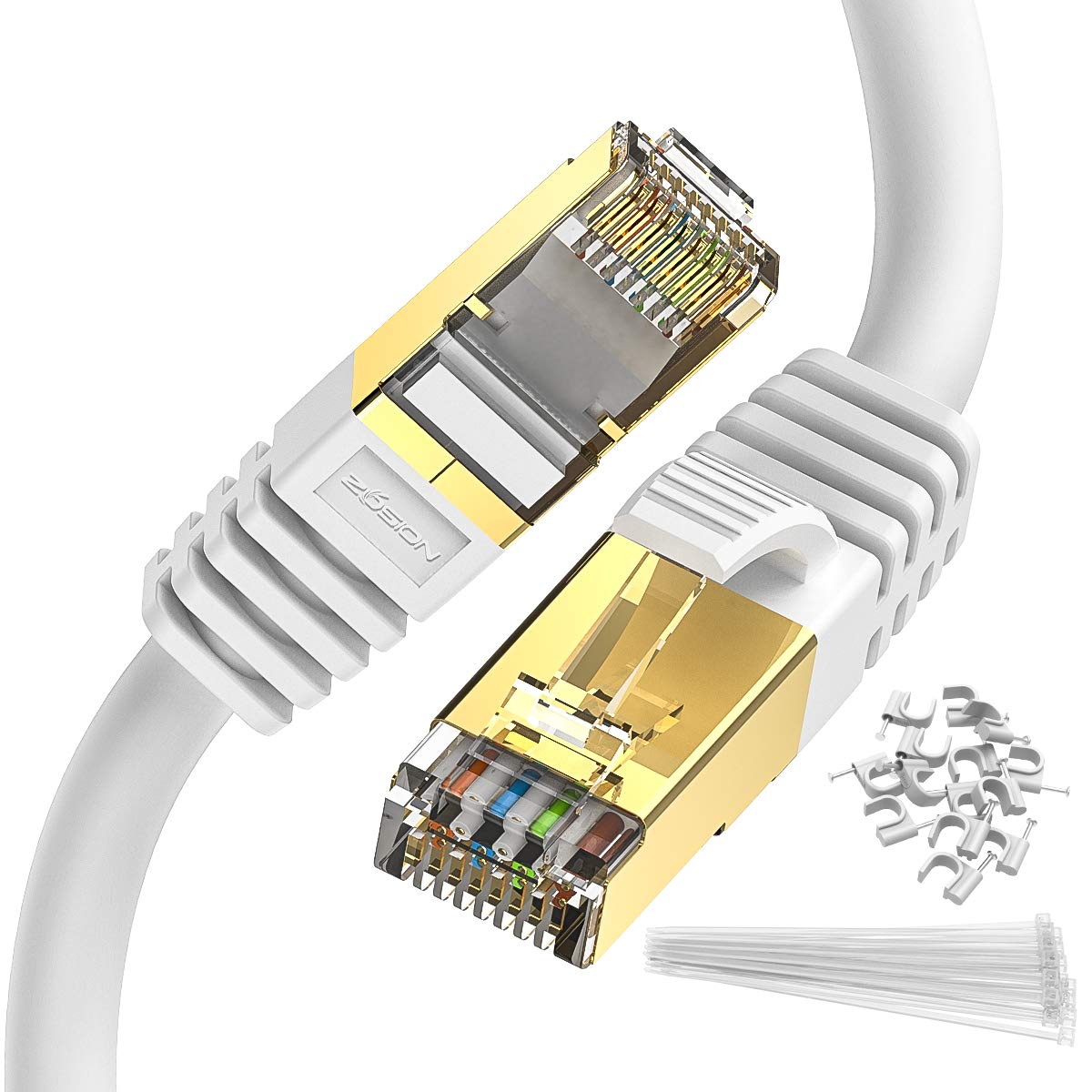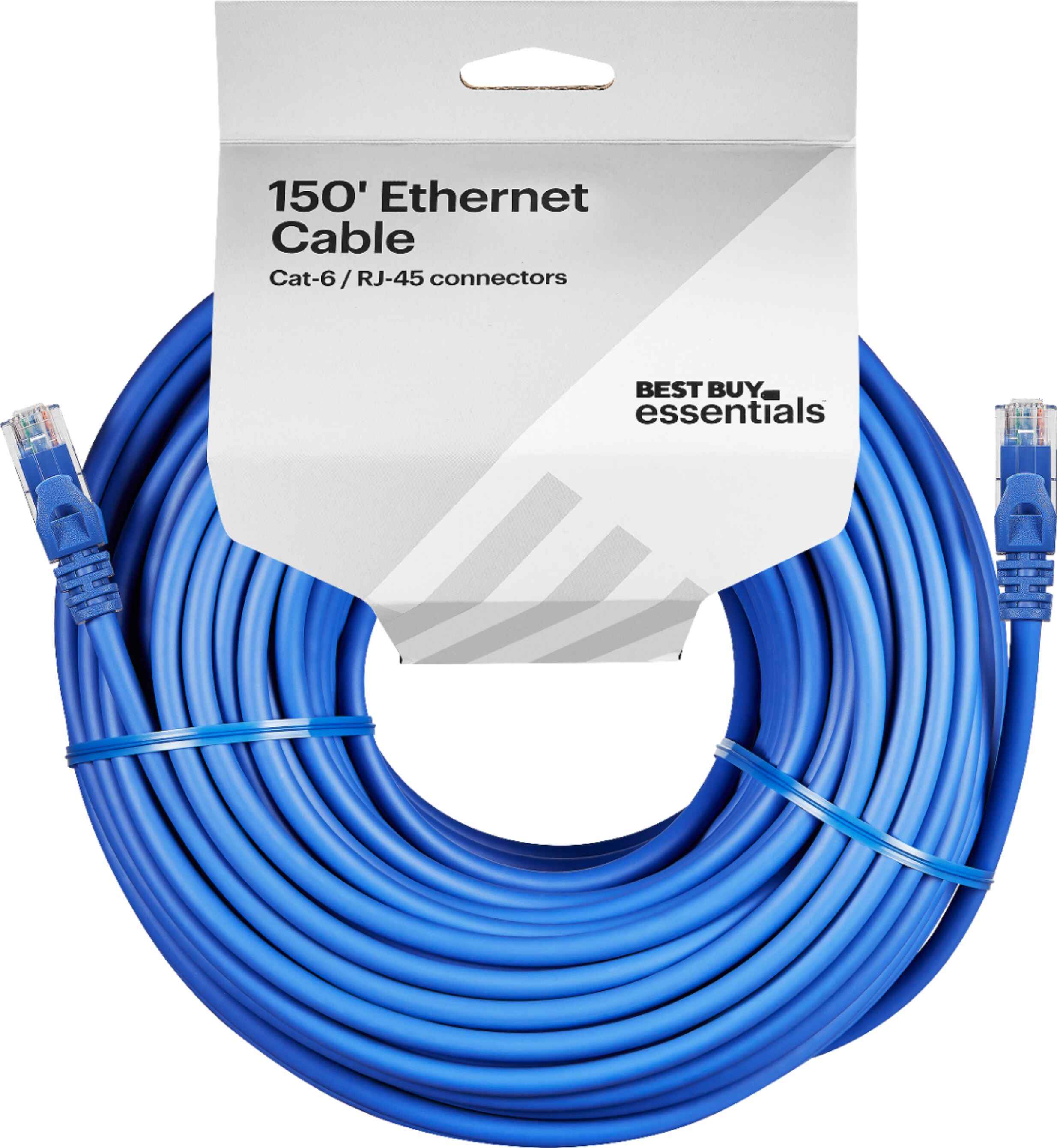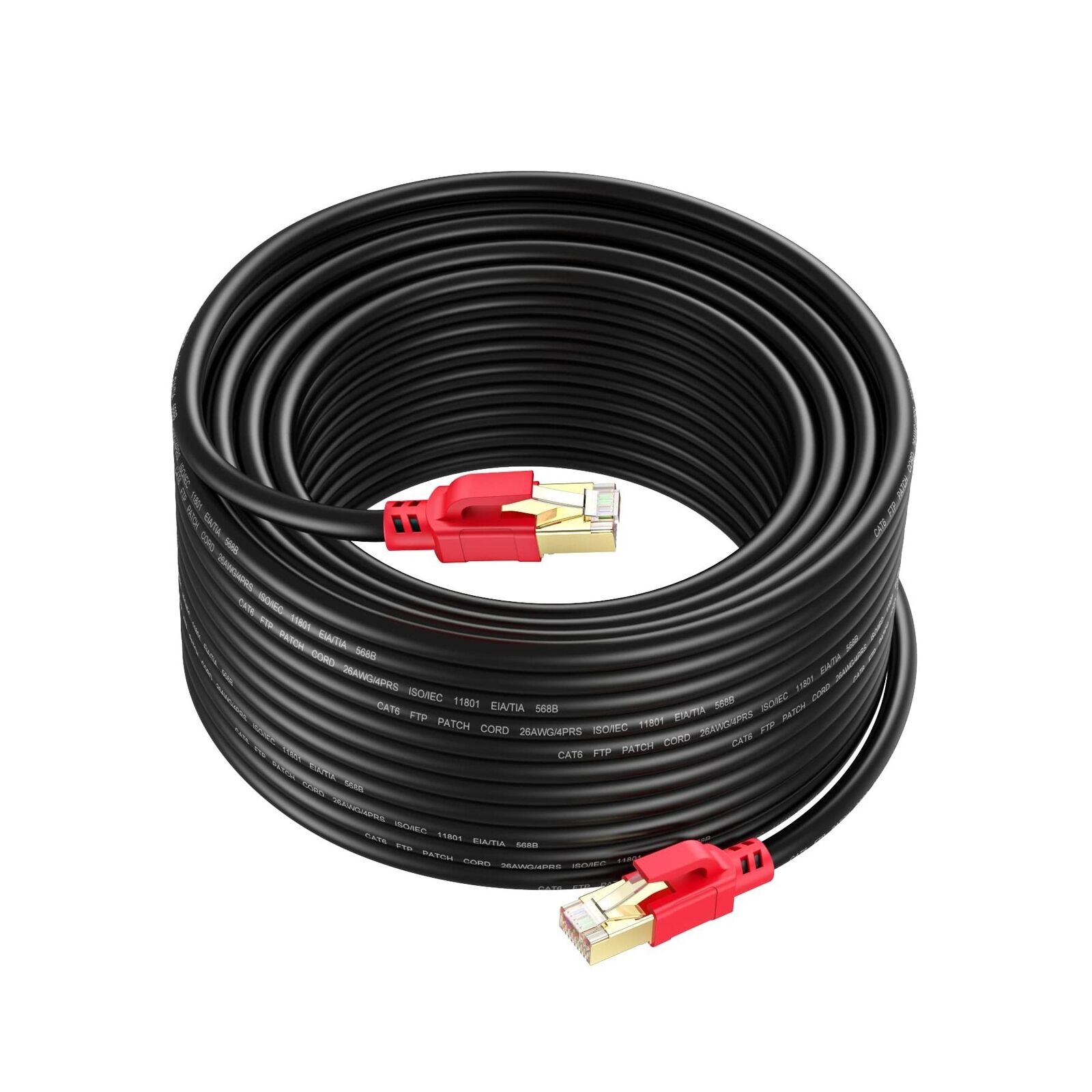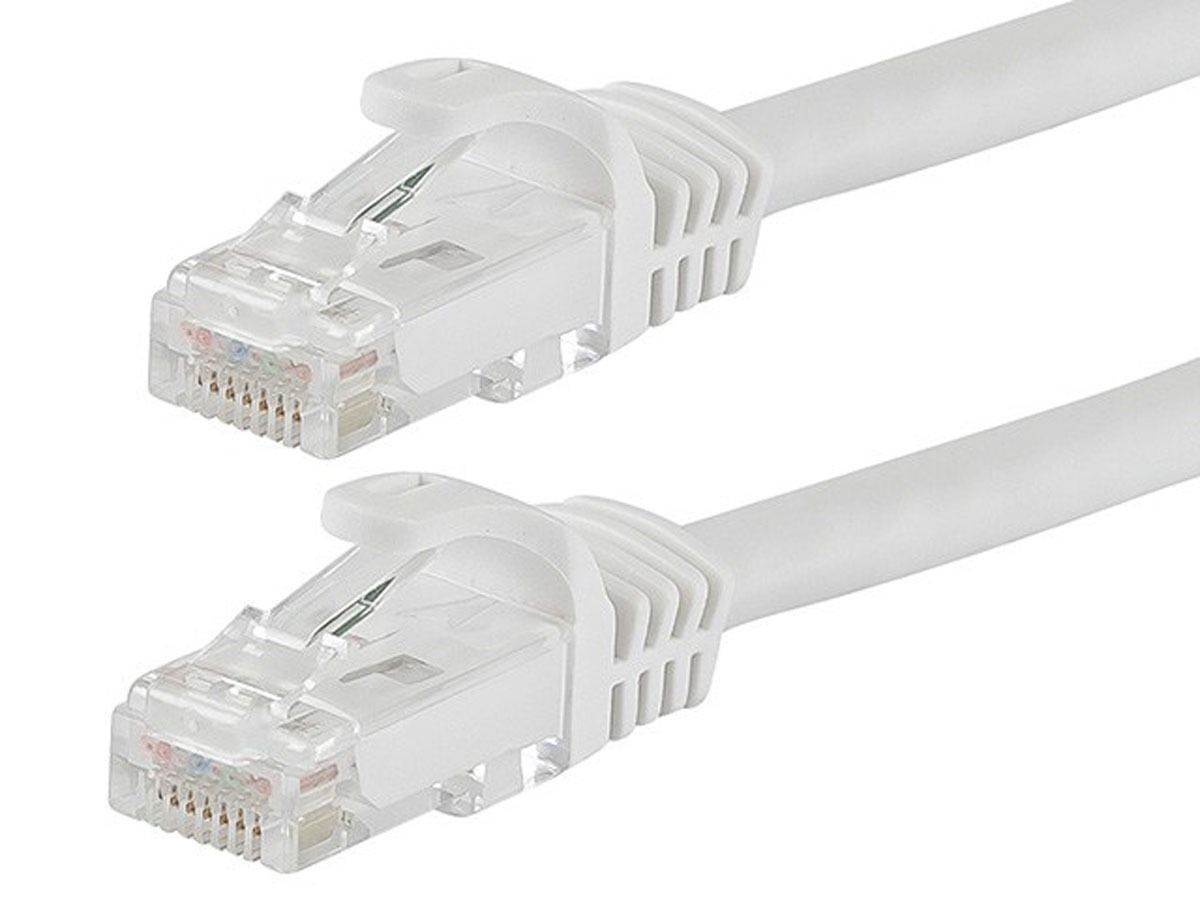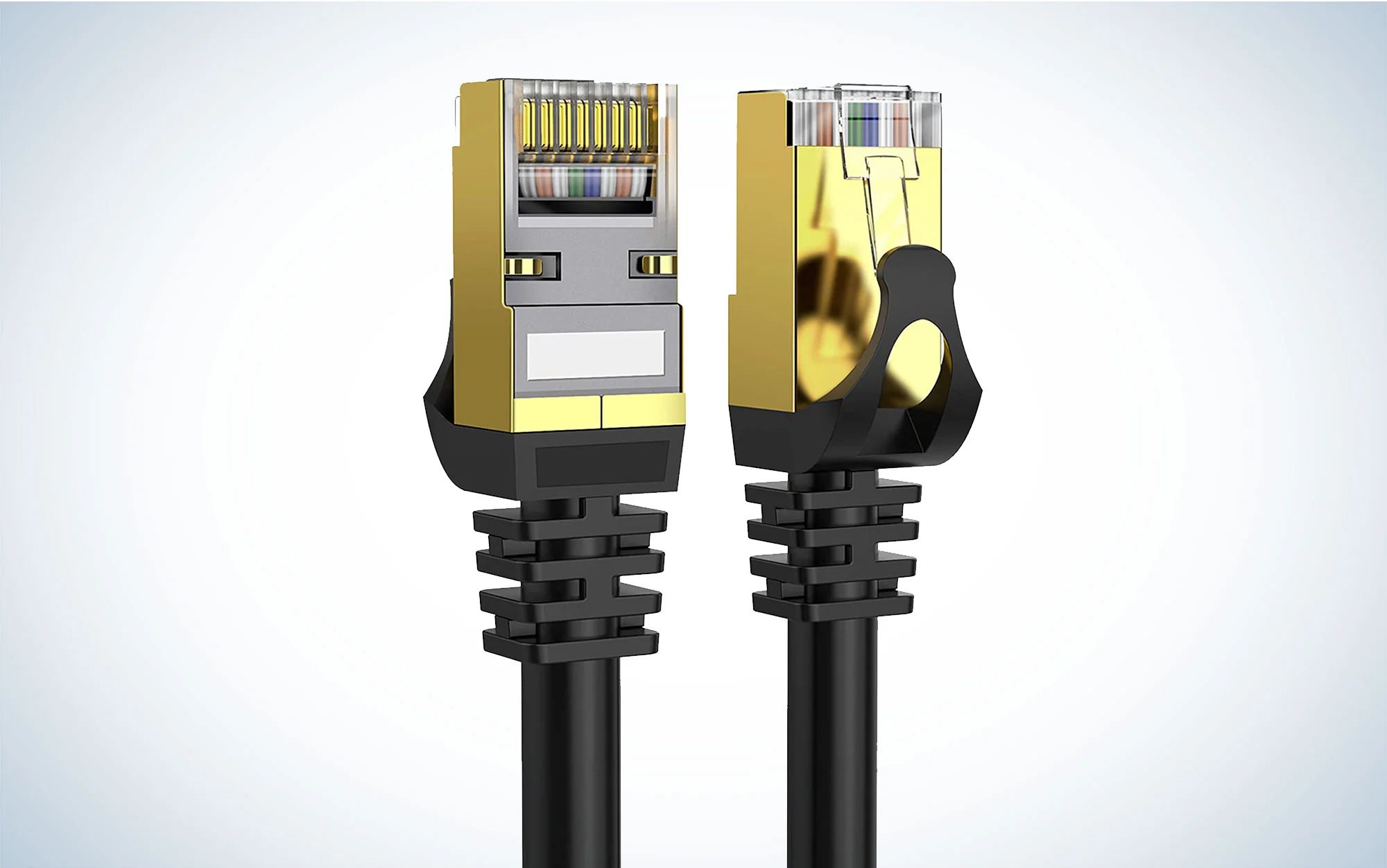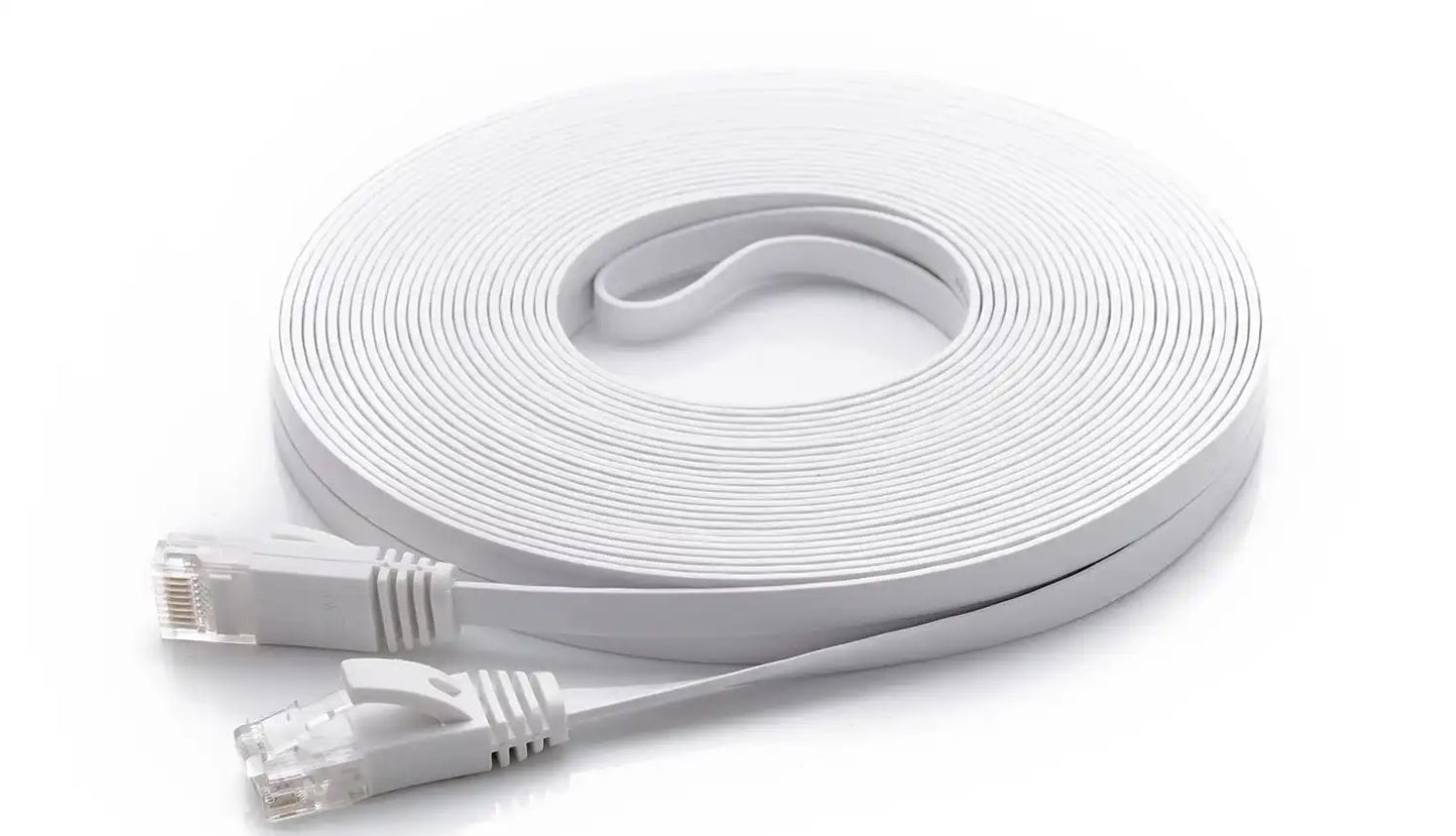Introduction
An Ethernet cable is a type of networking cable that is used to connect devices in a computer network. It serves as the physical medium for transmitting data from one device to another. Ethernet cables are commonly used in homes, offices, and data centers to establish reliable and high-speed network connections.
In today’s digital age, where internet connectivity and network reliability are essential, understanding the factors that affect the length of an Ethernet cable is crucial. Knowing the maximum length allowed for different categories of Ethernet cables can help you determine the best cable length for your specific networking needs.
In this article, we will explore the maximum lengths for different types of Ethernet cables, including Cat5e, Cat6, and Cat6a. We will also discuss the factors that can affect the length of an Ethernet cable and provide some guidance on choosing the appropriate cable length for your networking setup.
Whether you’re setting up a home network, expanding your office infrastructure, or planning a data center deployment, having a clear understanding of Ethernet cable lengths can help you ensure optimal network performance and reliability.
So, let’s delve into the world of Ethernet cables and discover how long they can be!
What is an Ethernet Cable?
An Ethernet cable is a type of networking cable that is designed to connect devices within a local area network (LAN). It enables the transmission of data signals from one device to another, allowing for communication and the sharing of resources, such as internet access, files, and printers.
The term “Ethernet” refers to the family of wired networking technologies that are based on the Ethernet standard. Ethernet cables are used to create a physical connection between devices, such as computers, routers, switches, and other network-enabled peripherals.
Ethernet cables are constructed with twisted pairs of copper wire surrounded by insulation, shielding, and an outer sheath. These cables are available in different categories, such as Cat5e, Cat6, and Cat6a, each with varying levels of performance and maximum transmission speeds.
The primary function of an Ethernet cable is to provide a reliable and high-speed connection between devices. It uses a technique called
Factors that affect the length of an Ethernet Cable
The length of an Ethernet cable can be influenced by several factors, which can impact the overall network performance and reliability. Understanding these factors is vital when determining the appropriate cable length for your networking needs. Here are some key factors to consider:
1. Signal Degradation: As an Ethernet signal travels along a cable, it experiences some degree of signal degradation. The longer the cable, the greater the signal loss. Higher-quality cables are designed to minimize signal degradation, allowing for longer cable lengths without compromising performance.
2. Transmission Speed: The maximum cable length can vary based on the transmission speed. Higher transmission speeds, such as those supported by Cat6 or Cat6a cables, may have shorter maximum length limits compared to lower transmission speeds like Cat5e cables.
3. Cable Quality: The quality of the cable, including its construction and materials used, can have a significant impact on the maximum cable length. High-quality cables with better insulation and shielding are less susceptible to signal interference, allowing for longer cable runs.
4. Interference: External factors, such as electromagnetic interference (EMI) from other electronic devices or environmental factors like excessive heat or moisture, can affect signal quality and limit the length of an Ethernet cable.
5. Network Equipment: The type and quality of network equipment, such as routers, switches, and network interface cards, can also impact the maximum cable length. Some equipment may have limitations on the distance it can reliably transmit and receive signals.
6. Networking Standards: Different Ethernet standards, such as Fast Ethernet (10/100 Mbps) or Gigabit Ethernet (1000 Mbps), have their own specific requirements for cable length. Ensuring that your cable length adheres to the appropriate networking standard is essential for optimal performance.
By considering these factors, you can determine the maximum length of Ethernet cable suitable for your network setup. It is crucial to strike a balance between cable length and network performance to ensure reliable and efficient data transmission.
Maximum length for Cat5e Ethernet Cable
Cat5e (Category 5e) Ethernet cables are a commonly used type of networking cables that provide reliable data transmission at speeds up to 1 gigabit per second (Gbps). The maximum length for Cat5e Ethernet cables is typically 100 meters or 328 feet.
This maximum length limitation is based on the Ethernet standard and is designed to ensure optimal signal quality and minimize the chances of signal degradation or data loss over longer cable runs. It is important to note that this length includes the length of the cable from the device to the network switch or router and should not be exceeded to maintain network performance.
Exceeding the maximum length for Cat5e cables can result in decreased data transfer speeds, signal loss, and an increase in errors or packet loss. This can impact the overall performance and reliability of your network.
It is also worth mentioning that other factors, such as the quality of the cable, interference, and the networking equipment used, can influence the actual achievable length of a Cat5e Ethernet cable. High-quality Cat5e cables and proper installation practices can help mitigate signal degradation and maintain optimal performance at longer distances.
If you require longer cable runs, it is advisable to consider upgrading to a higher category cable, such as Cat6 or Cat6a, which have higher transmission speeds and longer maximum length restrictions. However, if your network requirements do not necessitate longer cable lengths or higher data transfer speeds, Cat5e cables can still provide reliable performance within their maximum length limitations.
Ultimately, when planning your network infrastructure and determining the appropriate length of Cat5e Ethernet cables, it is crucial to consider the specific requirements of your network, the desired data transfer speeds, and the limitations set by the Ethernet standards to ensure optimal network performance and reliability.
Maximum length for Cat6 Ethernet Cable
Cat6 (Category 6) Ethernet cables are an enhanced version of Cat5e cables, offering higher performance and faster data transmission speeds. With improved internal construction and tighter specifications, Cat6 cables support speeds of up to 10 gigabits per second (Gbps) over shorter distances. The maximum length for Cat6 Ethernet cables is typically 55 meters or 180 feet.
The reduced maximum length of Cat6 cables compared to Cat5e cables is due to the higher transmission speeds it supports. At higher speeds, there is a greater risk of signal loss and interference, making shorter cable runs necessary to ensure reliable data transmission.
It is vital to note that the maximum length of Cat6 cables includes the length of the cable from the device to the network switch or router. Exceeding this maximum length can lead to signal degradation, increased error rates, and reduced network performance.
While Cat6 cables have a shorter maximum length compared to Cat5e cables, they provide significantly higher data transfer speeds, making them ideal for demanding applications where speed is crucial, such as video streaming, online gaming, and large file transfers.
Like with any Ethernet cable, the actual achievable length of a Cat6 cable may vary depending on factors such as cable quality, environmental interference, and the networking equipment used. Using high-quality Cat6 cables and adhering to proper installation practices can help optimize performance and maximize the achievable cable length.
If you require longer cable runs without sacrificing performance, considering Cat6a (Category 6a) cables might be beneficial. Cat6a cables support 10 Gbps speeds over longer distances, with a maximum length of up to 100 meters or 328 feet. However, for most standard network installations, Cat6 cables are often sufficient and provide reliable performance within their maximum length limitations.
When planning your network infrastructure, it is crucial to consider the specific requirements of your network, the desired data transfer speeds, and the limitations set by the Ethernet standards. By doing so, you can ensure optimal network performance and reliability with the appropriate length of Cat6 Ethernet cables.
Maximum length for Cat6a Ethernet Cable
Cat6a (Category 6a) Ethernet cables are an advanced version of Cat6 cables, providing even higher performance and faster data transfer speeds. Cat6a cables are designed to support 10 Gigabit Ethernet (10 Gbps) speeds over longer distances, making them suitable for high-speed network applications. The maximum length for Cat6a Ethernet cables is typically 100 meters or 328 feet.
The increased maximum length of Cat6a cables compared to Cat6 cables is possible due to their enhanced internal construction and improved specifications. With better insulation and shielding, Cat6a cables offer improved resistance to external interference and signal loss, allowing for longer cable runs while maintaining reliable data transmission.
With their 10 Gbps capability and longer maximum length, Cat6a cables are often chosen for professional network installations that require high data transfer rates, such as data centers, server rooms, and larger corporate networks.
It is important to note that the maximum length for Cat6a cables includes the length of the cable from the device to the network switch or router. Exceeding this maximum length can result in degraded signal quality, increased error rates, and reduced network performance.
While Cat6a cables provide superior performance, it is essential to consider the specific requirements of your network and the networking standards you are working with. In some cases, Cat6 cables or even Cat5e cables might be sufficient and more cost-effective, depending on the desired data transfer speeds and the length of cable runs needed for your network infrastructure.
When deploying Cat6a Ethernet cables, it is beneficial to ensure the cables are of high quality, properly installed, and meet the necessary industry standards. This will help ensure optimal performance, minimize signal degradation, and achieve the desired data transfer rates over the maximum allowable length.
By carefully considering the specific needs of your network and the limitations set by the Ethernet standards, you can confidently choose the appropriate length of Cat6a Ethernet cables to meet the demands of your high-speed network infrastructure.
Factors to consider when choosing the length of an Ethernet Cable
When selecting the length of an Ethernet cable for your network infrastructure, it is crucial to take several factors into consideration. Choosing the appropriate cable length can ensure optimal network performance and reliability. Here are some key factors to keep in mind:
1. Distance between Devices: Determine the physical distance between the devices that require network connectivity. This includes considering the location of network switches, routers, servers, and endpoints. It is essential to choose a cable length that adequately covers the required distance without exceeding the maximum length allowed for the respective Ethernet category.
2. Flexibility and Mobility: If you anticipate frequent changes in network connectivity or the need for cable movement, opting for shorter cables can provide more flexibility and ease of use. However, keep in mind that excessively short cables may restrict the position and placement of network devices.
3. Future Expansion: Consider the possibility of future network expansion or the addition of new devices. It is advisable to plan for potential growth when determining cable lengths. Adding extra length can accommodate future needs without requiring significant changes to the network infrastructure.
4. Signal Quality: Longer cable runs can introduce signal degradation and impact network performance. To ensure optimal signal quality, choose high-quality cables that offer better insulation, shielding, and signal integrity. This becomes particularly important as cable lengths increase.
5. Interference and Environmental Factors: Assess the surrounding environment for potential sources of interference such as power lines, fluorescent lights, or other electronic devices. Additionally, consider environmental factors like temperature, humidity, and exposure to moisture that can impact cable performance. Taking these factors into account can help determine the appropriate cable length for reliable network connectivity.
6. Budget Considerations: Longer cables typically require more material and may incur higher costs. Balance your network requirements with your budget when choosing the cable lengths. Opting for the most cost-effective solution that meets your network needs can be a wise approach.
By considering these factors, you can select the most suitable Ethernet cable lengths that align with your network requirements. It is important to strike a balance between cable length, signal quality, practicality, and budget to ensure optimal network performance and future-proofing your network infrastructure.
Remember: Quality of cables matter
When it comes to Ethernet cables, one crucial aspect that should not be overlooked is the quality of the cables themselves. The quality of the cables you choose can have a significant impact on the overall performance and reliability of your network. Here are some important factors to consider:
1. Signal Integrity: High-quality cables are designed with superior insulation and shielding materials, reducing the risk of signal degradation and interference. This results in improved signal integrity, minimizing the potential for data loss, packet errors, and network interruptions.
2. Durability: Well-constructed cables with robust connectors and sturdy outer sheaths are more resistant to wear and tear. Choosing cables of good quality ensures that they can withstand the demands of daily use, reducing the risk of physical damage or connectivity issues.
3. Longevity: Investing in high-quality cables means they will have a longer lifespan. High-quality cables are manufactured to meet industry standards, ensuring their performance and reliability for an extended period. This reduces the need for frequent cable replacements, saving you time and money in the long run.
4. Compatibility: Quality cables are manufactured to meet specific standards, ensuring compatibility with various network devices such as routers, switches, and network interface cards. This compatibility ensures seamless integration into your network infrastructure and avoids any compatibility issues or performance limitations.
5. Compliance: Cables that comply with industry standards undergo rigorous testing to ensure quality and reliability. Choosing cables that comply with these standards provides reassurance that they have been thoroughly evaluated and meet specific performance criteria.
6. Manufacturer Reputation: Opting for cables from reputable manufacturers known for their quality products is always a wise choice. Well-established manufacturers invest in research and development, adhere to strict manufacturing processes, and offer warranties, giving you peace of mind regarding the quality and performance of their cables.
Remember, the quality of your Ethernet cables directly impacts the performance, reliability, and longevity of your network. It is worth investing in high-quality cables to ensure optimal network performance and minimize the risk of network issues. While higher-quality cables may come at a slightly higher cost, their long-term benefits far outweigh any initial investment.
So, when selecting Ethernet cables, prioritize quality over cost. By choosing high-quality cables, you can build a robust and reliable network infrastructure that meets your current needs and can adapt to future technological advancements.
Conclusion
Understanding the factors that affect the length of an Ethernet cable is essential for building a reliable and high-performance network infrastructure. Whether you are setting up a home network, expanding your office infrastructure, or planning a data center deployment, choosing the appropriate cable length is crucial in ensuring optimal network performance and reliability.
In this article, we explored the maximum lengths for different categories of Ethernet cables, including Cat5e, Cat6, and Cat6a. We discussed the importance of considering factors such as signal degradation, transmission speed, cable quality, interference, and networking standards when determining the appropriate cable length.
We also highlighted the significance of cable quality and how it directly affects network performance and reliability. Investing in high-quality Ethernet cables ensures better signal integrity, durability, longevity, compatibility, and compliance with industry standards.
Remember, the choice of cable length and quality should be based on your specific network requirements, including the distances between devices, flexibility needs, future expansion plans, and budget considerations. By carefully considering these factors, you can make informed decisions that lead to a well-designed and efficient network infrastructure.
Lastly, don’t hesitate to seek advice from experts or consult reputable manufacturers to ensure you have the right cables for your network. Building a network infrastructure with the appropriate cable lengths and high-quality cables will provide the reliability and performance needed for seamless data transmission, faster speeds, and enhanced network connectivity.
So, take the time to evaluate your network needs, consider the factors discussed in this article, and make informed choices when selecting the length and quality of your Ethernet cables. By doing so, you will set the foundation for a robust and reliable network that can meet the demands of today’s digital world and adapt to future technological advancements.







